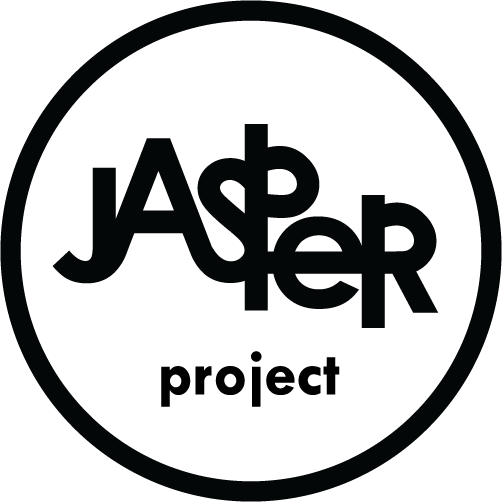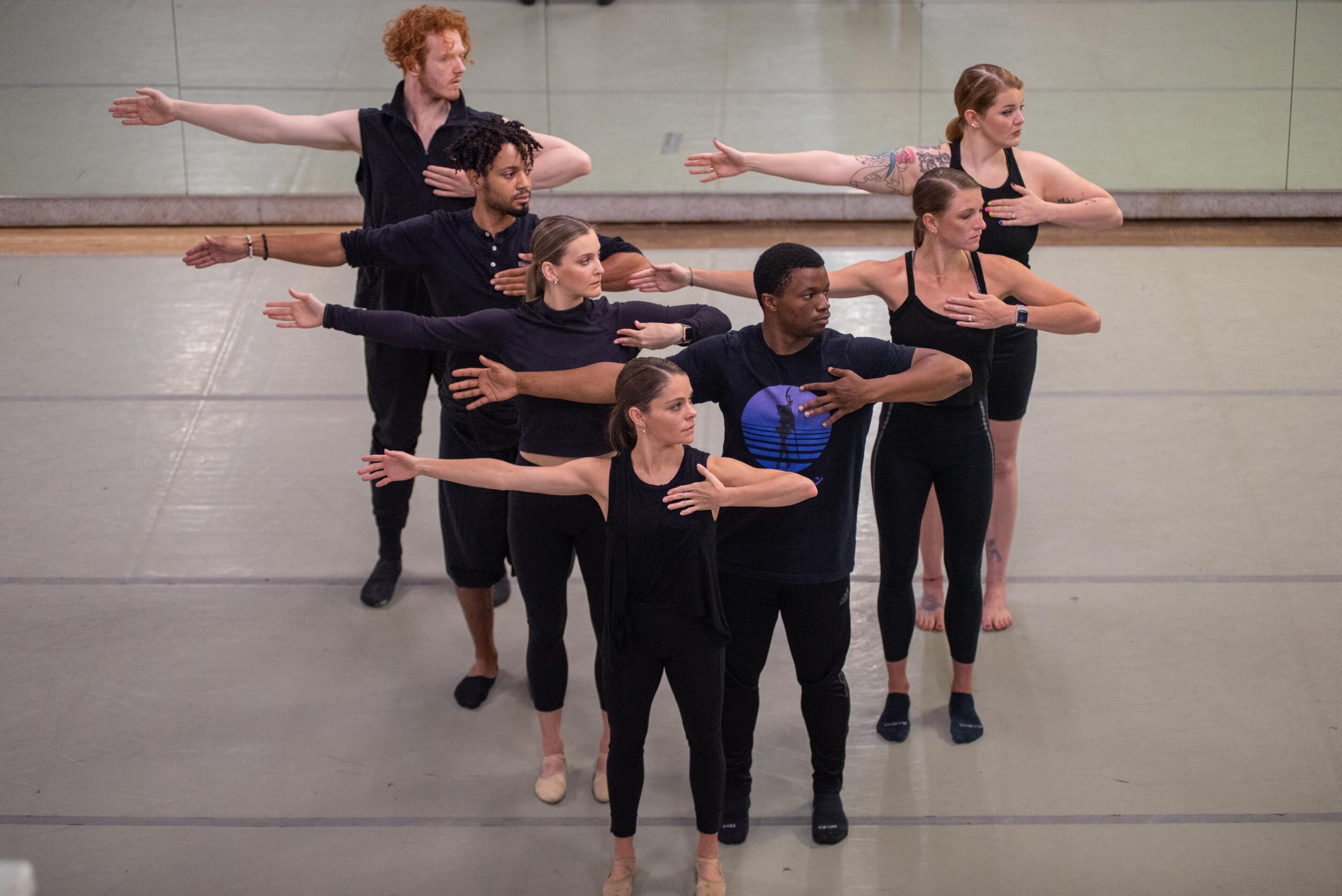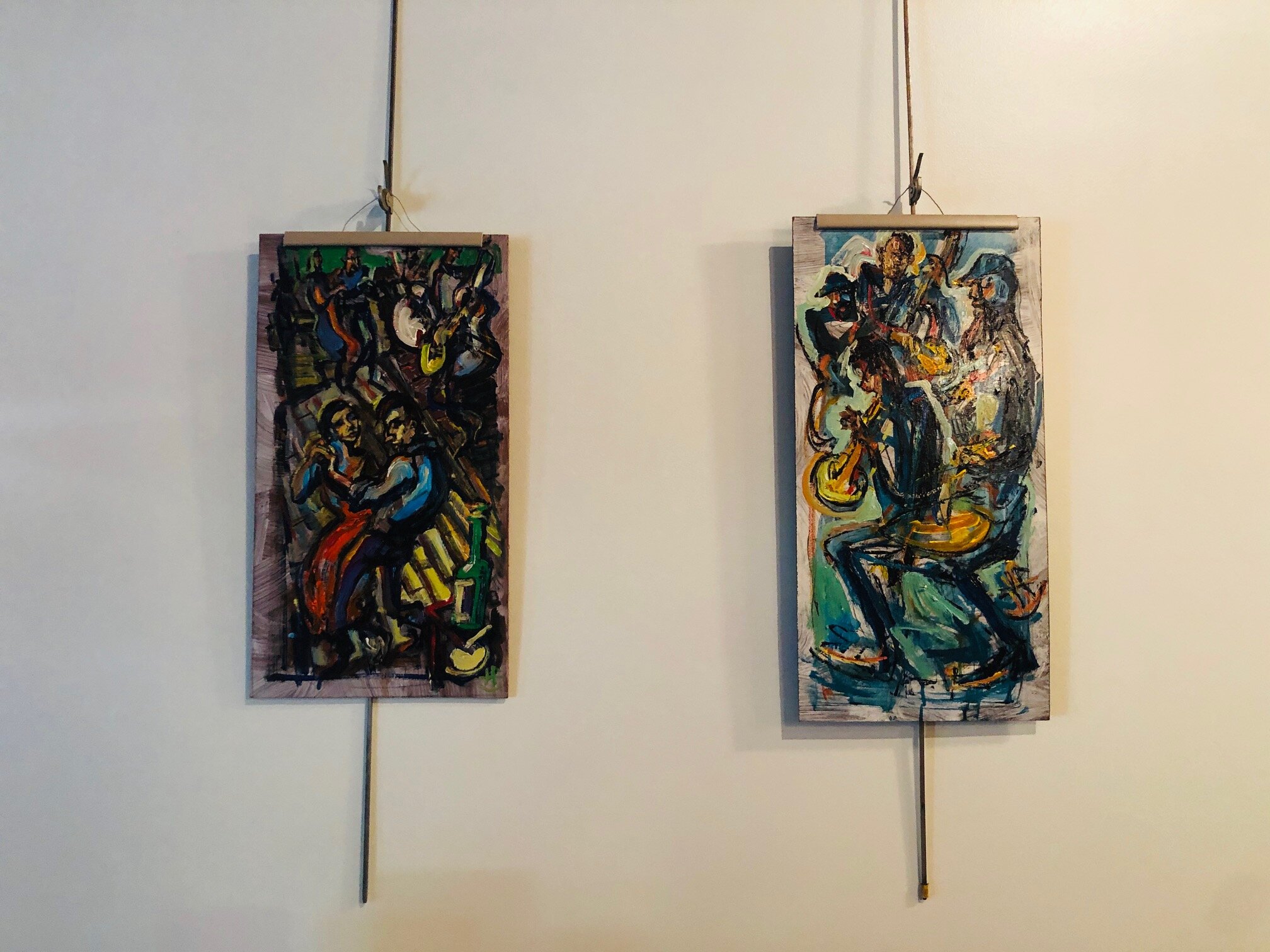“What would have happened had they stayed here — what if that talent had been able to thrive here in Columbia because they were given the opportunity to pursue … what they were maybe really missing out on?
Josh Alexander, Bonnie Boiter-Jolley, Jennifer Becker Lee, Josh Van Dyke, Nicholas White, Abby McDowell, Nicole Carrion - photo — Kevin Kyzer
The Columbia Summer Rep Dance Company brings jobs to dancers and shows to local audiences during the summer months. After founding the company in 2019, Bonnie Boiter-Jolley and Stephanie Wilkins are looking to do “something different.” This summer, after suspending the program due to COVID-19, the company is back with a limited engagement performance on August 13th & 14th of LIMITLESS.
Columbia only had two professional ballet companies, according to Boiter-Jolley — Columbia City Ballet and Columbia Classical Ballet. Their respective seasons each last from around September to March, leaving half the year vacant of professional ballet for Columbia audiences — and several months without local work for performers.
photo credit Kevin Kyzer
Boiter-Jolley had long discussed the notion of working through the summer with other dancers at the Columbia City Ballet, but the idea lacked momentum until she started working with Wilkins. That’s when the option of starting a summer company came to life.
According to Boiter-Jolley, Wilkins had the creativity, energy, and motivation to get the project of bringing dance to Columbia’s off-season started. Wilkins had been an adjunct professor at Columbia College and USC and owns a Pilates studio in Columbia. “I kinda got burnt out in the university world and wanted to supplement my Pilates life with my artistic life and have a dance company of my own,” Wilkins says.
The Jasper Project serves as the fiscal agent for the Columbia Summer Repertory Dance Company until the organization acquires its own non-profit status.
“We have all this talent in Columbia that has to leave,” Wilkins says, “and we’d rather they stay here.”
After just five weeks of preparation, they were able to raise enough funds to debut their first show in 2019 and were, notably, able to pay both the dancers and the choreographers. Dancers and choreographers often have to find work outside of Columbia during the summer months due to their shortened seasons. “We have all this talent in Columbia that has to leave,” Wilkins says, “and we’d rather they stay here.”
According to Boiter-Jolley, there’s been a longstanding rivalry between Columbia City Ballet and Columbia Classical Ballet — a sense of competition that, in her opinion, is “silly,” given the breadth of talent that has originated in Columbia. Columbia dancers have made their way into the New York City Ballet, Broadway, and European companies, to name a few. “What would have happened had they stayed here — what if that talent had been able to thrive here in Columbia because they were given the opportunity to pursue … what they were maybe really missing out on?” Boiter-Jolley asks.
photo Kevin Kyzer
Boiter-Jolley questions the way in which Columbia limits itself, suggesting that the Columbia professional dance scene has been too strictly defined. Her goal with the new dance company is to create something new that is just as valuable and intellectually stimulating as traditional professional dances.
Aside from two small pieces that premiered in March, everything for the company’s upcoming season is entirely new. The dancers started rehearsing last summer, wearing masks, spacing out, and taking additional precautions. COVID-19 presented specific challenges to Wilkins as a choreographer, who has a penchant for partner-based dancing. Now that the members of the company have been vaccinated, some of the choreography has been adjusted to allow for more closeness between the dancers.
Boiter-Jolley intends for their August show to be a “pure and heartfelt” experience for everyone participating, without a sense of competition with other organizations.
This season will feature guest choreographers Dale Lam, head of Columbia City Jazz Conservatory, and Angela Gallo, the dean of the School of Visual and Performing Arts at Coker University, in addition to dancers Joshua Alexander, Abby McDowell, Nicholas White, Nicole Carrion, Josh Van Dyke, Samuel Huberty, and Jennifer Becker Lee. Alexander appeared in Hairspray Live! on ABC, So You Think You Can Dance, and the Superbowl halftime show.
The company is now only a few weeks away from its next performance, titled LIMITLESS. Boiter-Jolley intends for their August show to be a “pure and heartfelt” experience for everyone participating, without a sense of competition with other organizations. “We’re doing this because we love it,” Wilkins says, “and we can’t wait to share it with the city.” Both women look forward to seeing maskless dancers on stage, watching their facial expressions of emotion, and seeing the breath that carries their movements.
“There’s room for all of us,”
Wilkins mentioned the importance of fundraising efforts because, in spite of this genuine passion, the dancers and choreographers deserve to be paid. Based on funds, Wilkins would like to travel with the dancers and take them to international festivals. Additionally, Wilkins would like to see more local collaboration and mutual support.
NICOLE CARRION AND NICHOLAS WHITE - photo Kevin Kyzer
The women want viewers unfamiliar to the dance scene to watch their performances and feel something — regardless of what that emotion is. They encourage longtime supporters of Columbia dance not to limit themselves, to see something different with them, and, specifically, donate.
The women are open to conversations and questions from anyone interested in their work and want to avoid competition. “There’s room for all of us,” Wilkins says.

















































